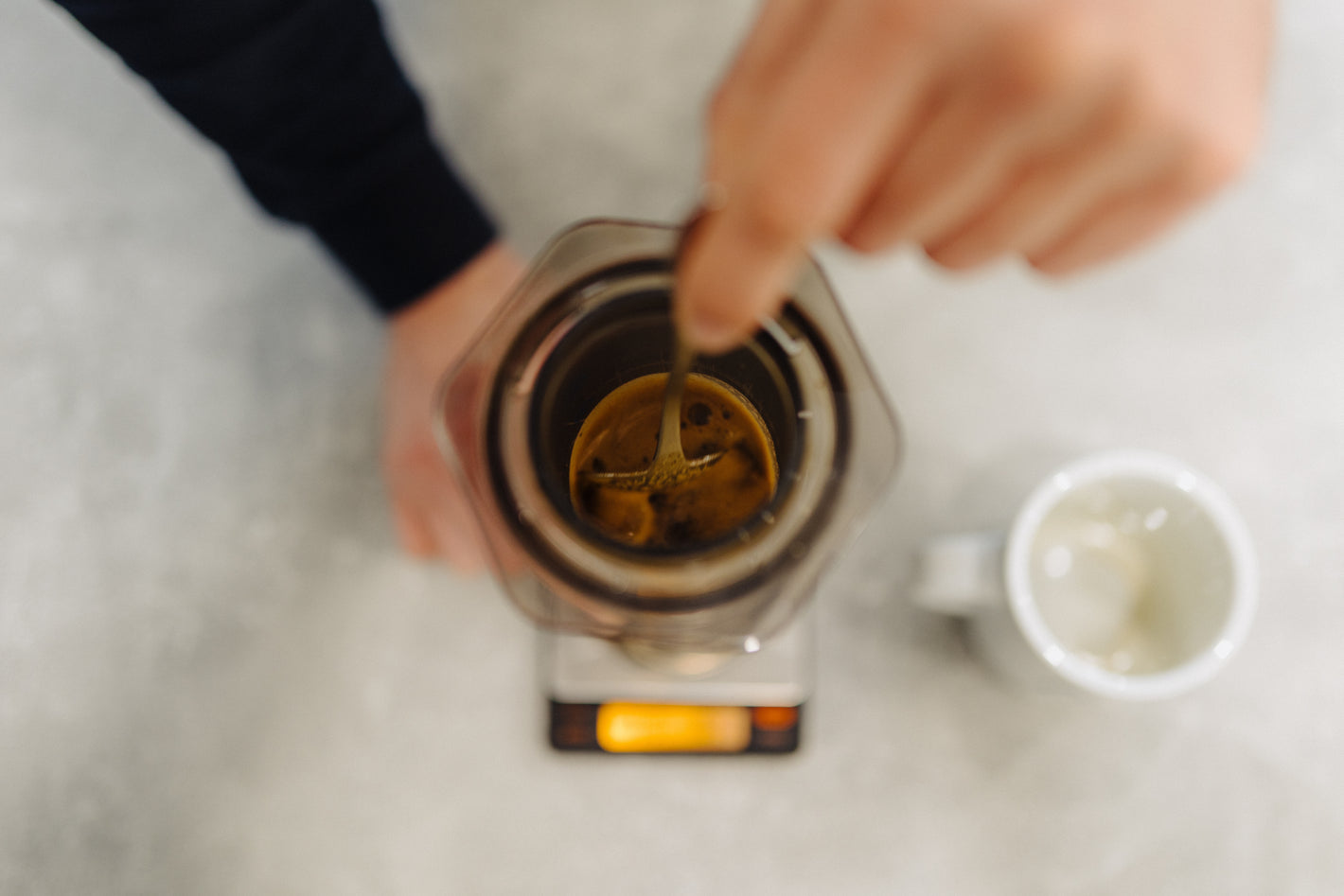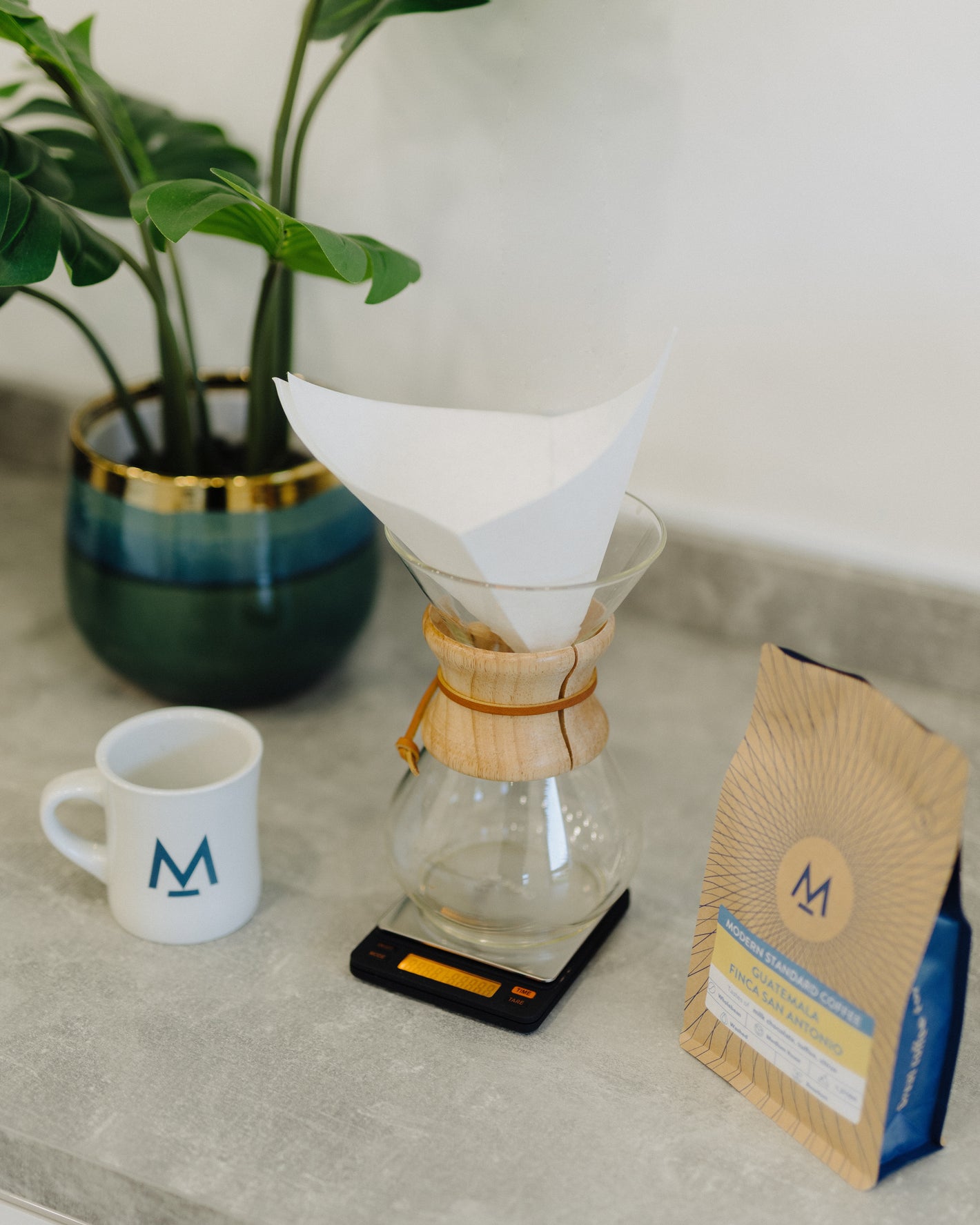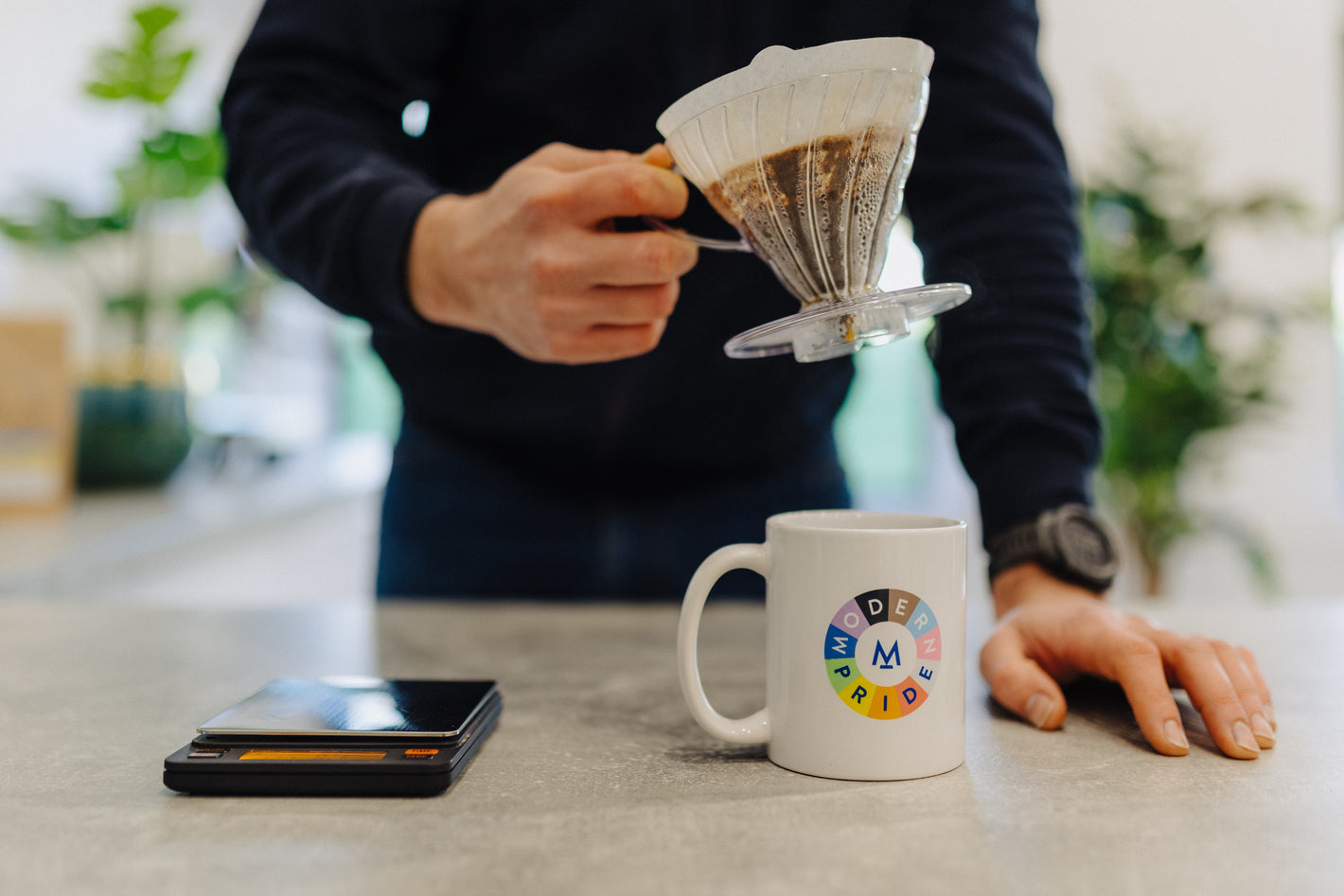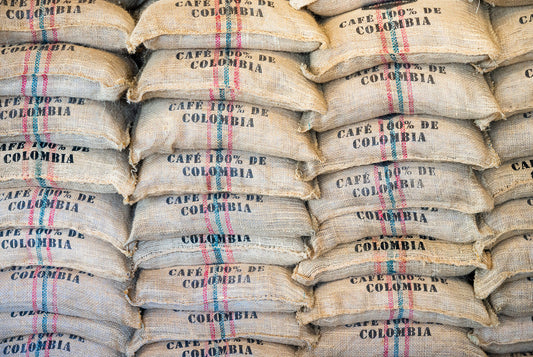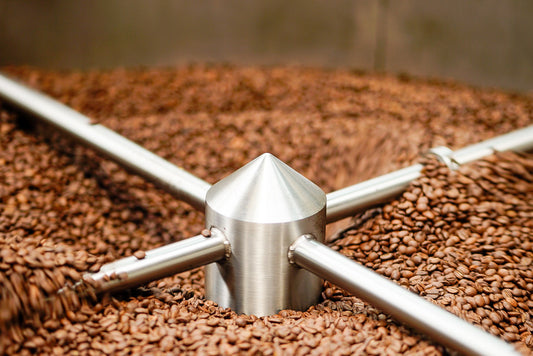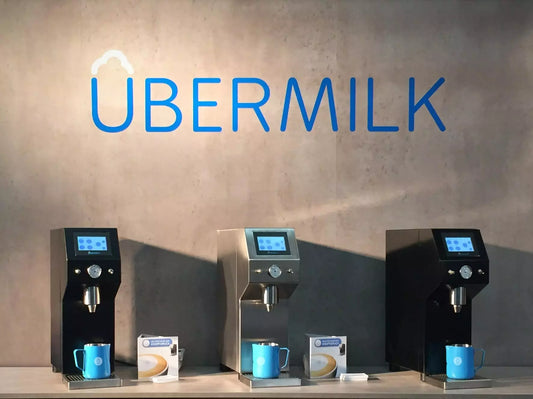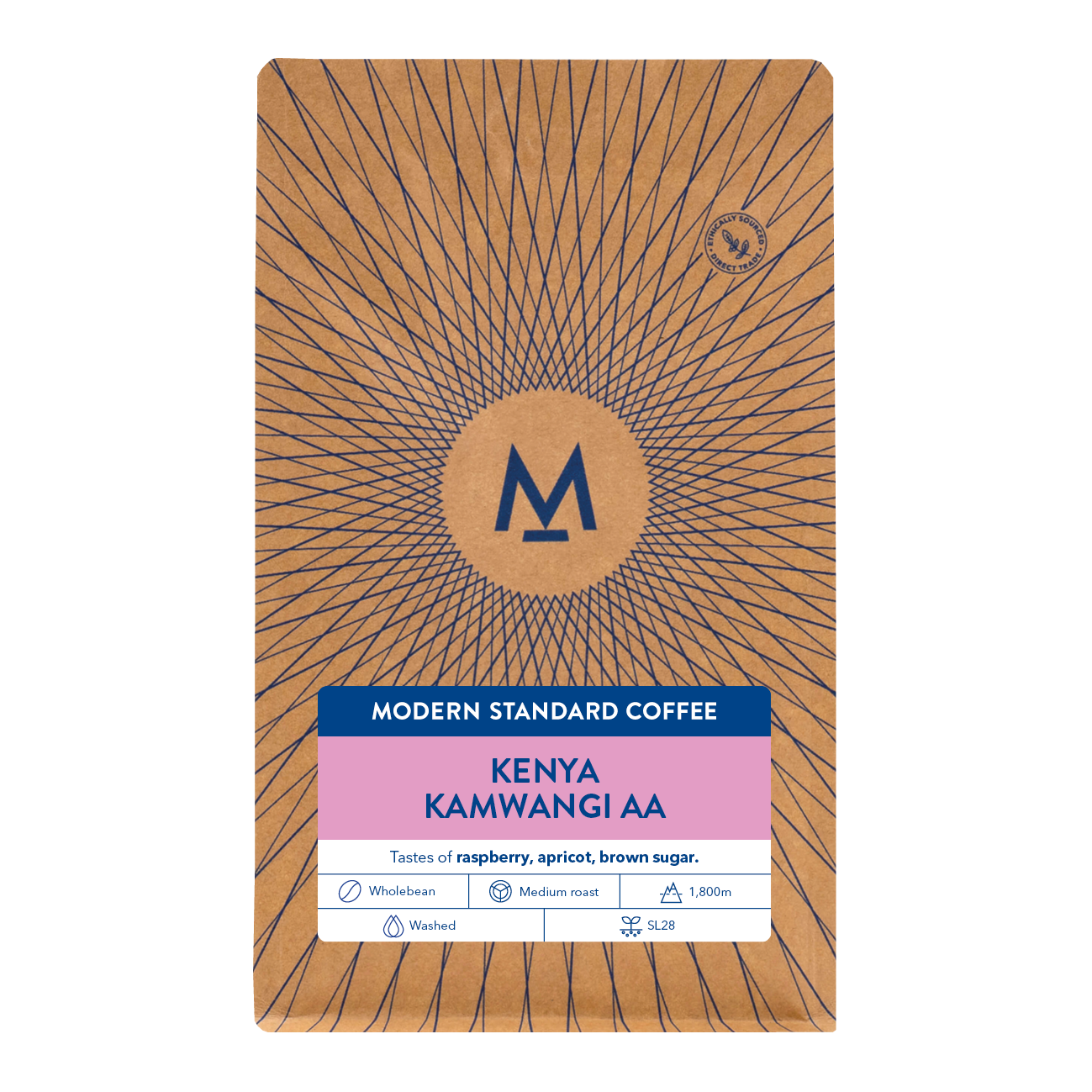
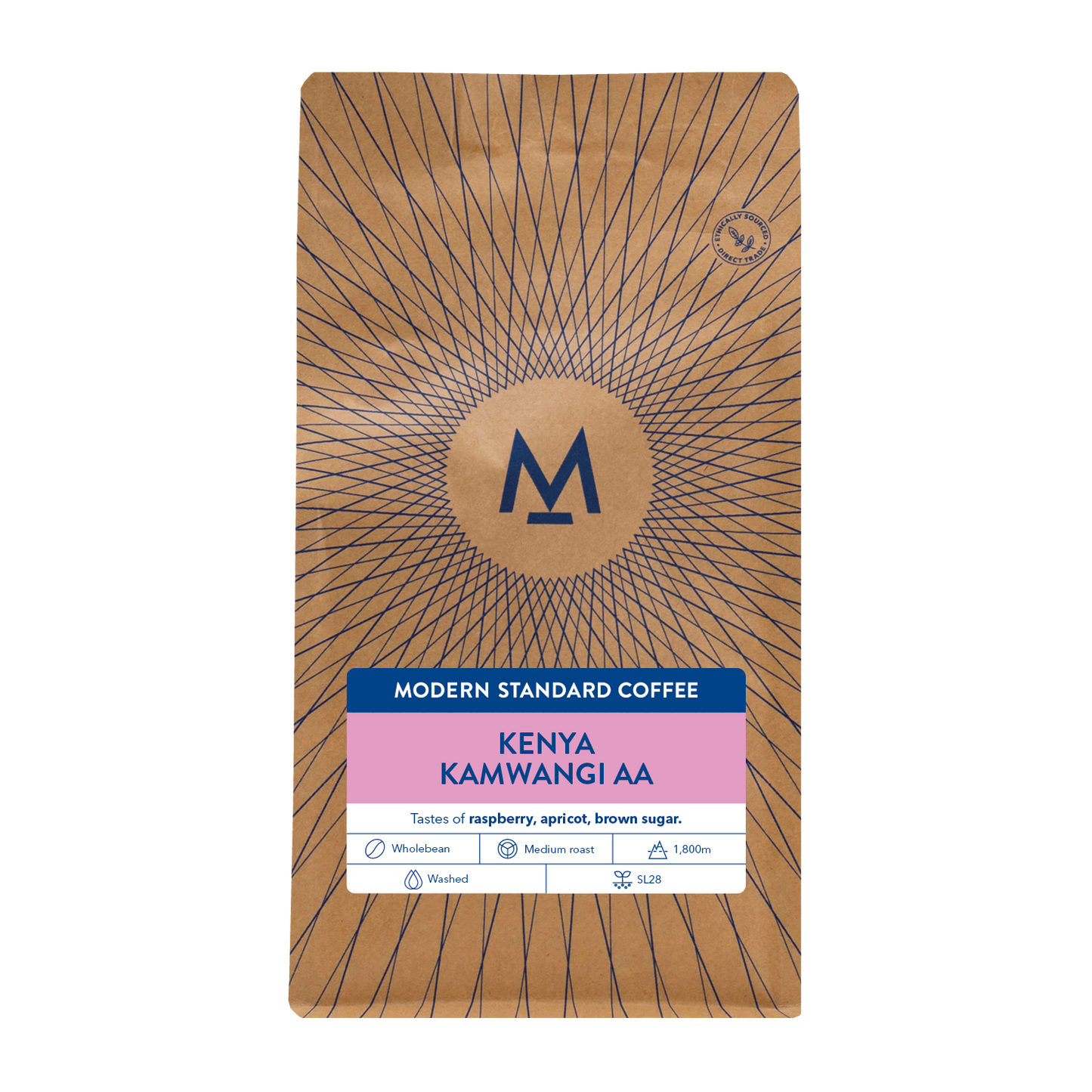
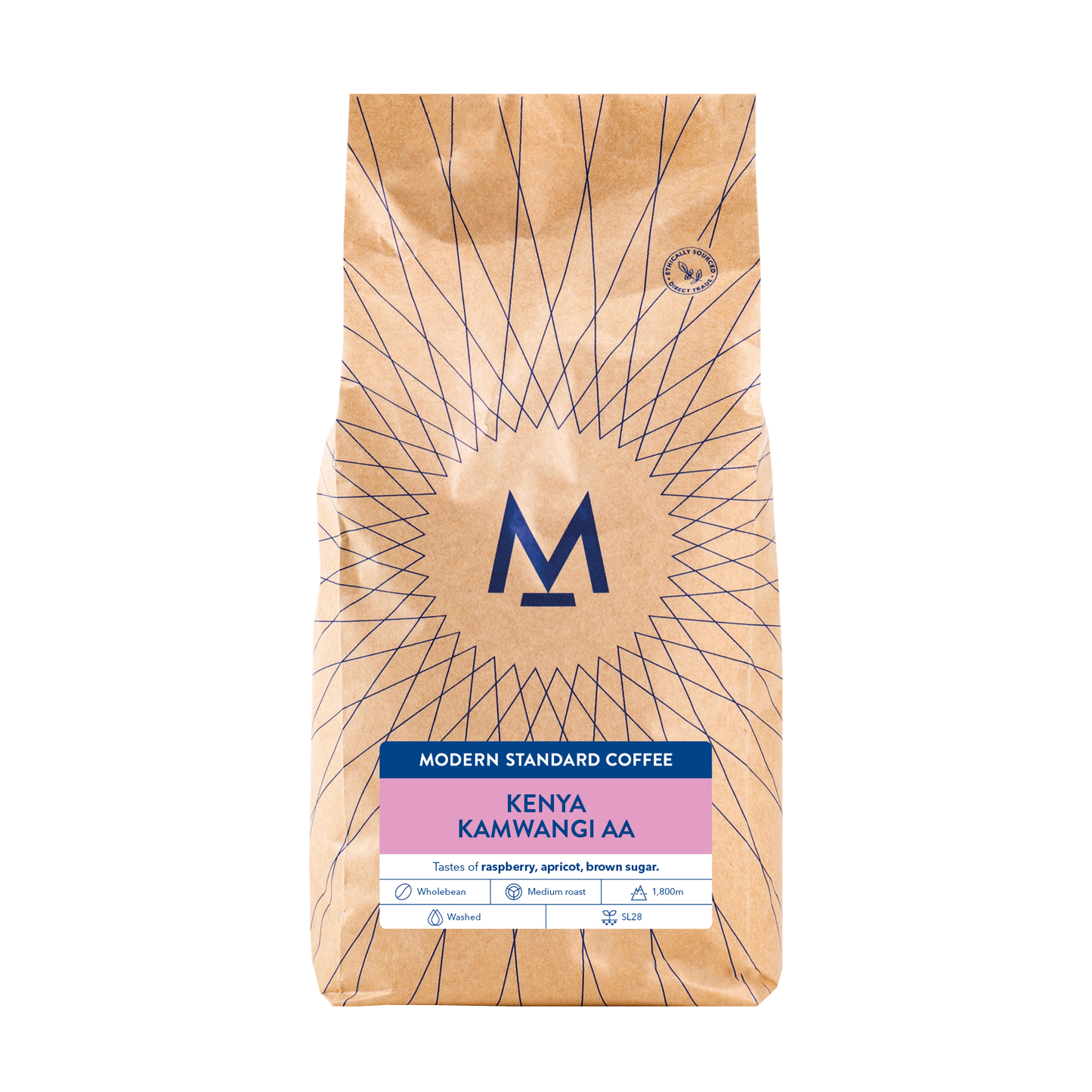
The overview
| Countries of origin | Kenya |
| Producer | Kamwangi Washing Station |
| Altitude | 1550 - 1650m |
| Varietal | SL 28 |
| Process | Washed |
The producer
The Kamwangi Coffee Factory is one of three coffee factories, located in the Kirinyaga district, operated by the New Ngariama Cooperative Society. It sits on the slopes of Mount Kenya in the agriculturally rich Central Province at 1,610m above sea level.
New Ngariama was originally part of a much larger society called Ngariama, which was established in the 1950s. This society was split up into smaller cooperatives, and New Ngariama is one of them.
The coffee
Around 500 members deliver coffee to Kamwangi. They have on average of 3 – 5 hectares of coffee (around 1,500–2,000 trees) planted at 1,550–1,650 meters above sea level.
Why we love it
Kamwangi is a winner; it has so much fruitiness that it's a stand out coffee. I would drink this all day long if I could!
Alex's Brew Guide
Out: 31-33g
Time: 24-26s
Water: 305g
Ratio: 1:17
Best leaving this coffee to rest for a few days from roasting.


SL28 & SL34
The main varieties of coffee grown in this region are SL-28 and -34, which account for 95% of all coffee produced. The region’s high altitude means that the coffee fruit is able to mature slowly, and this, combined with rich volcanic soil and careful processing, helps to highlight the inherent complex fruit flavours from the SL-28 and SL-34 varieties.
In addition to the SL-28 and SL-34 that are almost ubiquitous around Kenya, this lot contains around 5% of the Ruiru 11 variety. This variety is slowly becoming more widespread in the region due to its resistance to Coffee Berry Disease and Coffee Leaf Rust and has been backcrossed with SL-28 and SL-34 to ensure high cup quality.

Kenyan coffee
Despite sharing over 865 kilometers of border with Ethiopia, the birthplace of coffee, coffee had to circumnavigate the world before it set roots in Kenya. While the earliest credible reports place coffee in Ethiopia around 850 C.E., coffee was not first planted in Kenya until 1893 when French missionaries planted trees in Bura in the Taita Hills.
Under the rule of the British Empire coffee production geared for export expanded. Large, privately owned coffee growing estates were established and most harvests went to England in parchment, where it was sold to roasters prior to milling. Roasters often blended the bright flavors of Kenya with more chocolatey South American coffees.
Though large estates grew in hectarage and value, indigenous Kenyans did not benefit. In fact, European settlers took direct action to exclude indigenous people from growing coffee themselves.
In order to decrease competition, make labor accessible and inexpensive and continue the increase of demand for high-quality coffee, the Coffee Board was created to make regulations on coffee production and marketing. The Nairobi Coffee Exchange (NCE) (which continues to this day) was established in Nairobi to leave more of the value of green coffee at origin.





